CES 2019 TV Rumor Roundup - LG Rollable, Samsung Micro LED and More
What's coming to TVs at CES? We look at the rumors and trends that will shape the TV world in 2019.
The new year is almost upon us, and with it comes CES 2019 and announcements of what TVs are coming in 2019. While most companies are holding major news in reserve for the big show, rumors and leaks have started to give us a pretty clear picture of the trends and changes we can expect in the coming months.
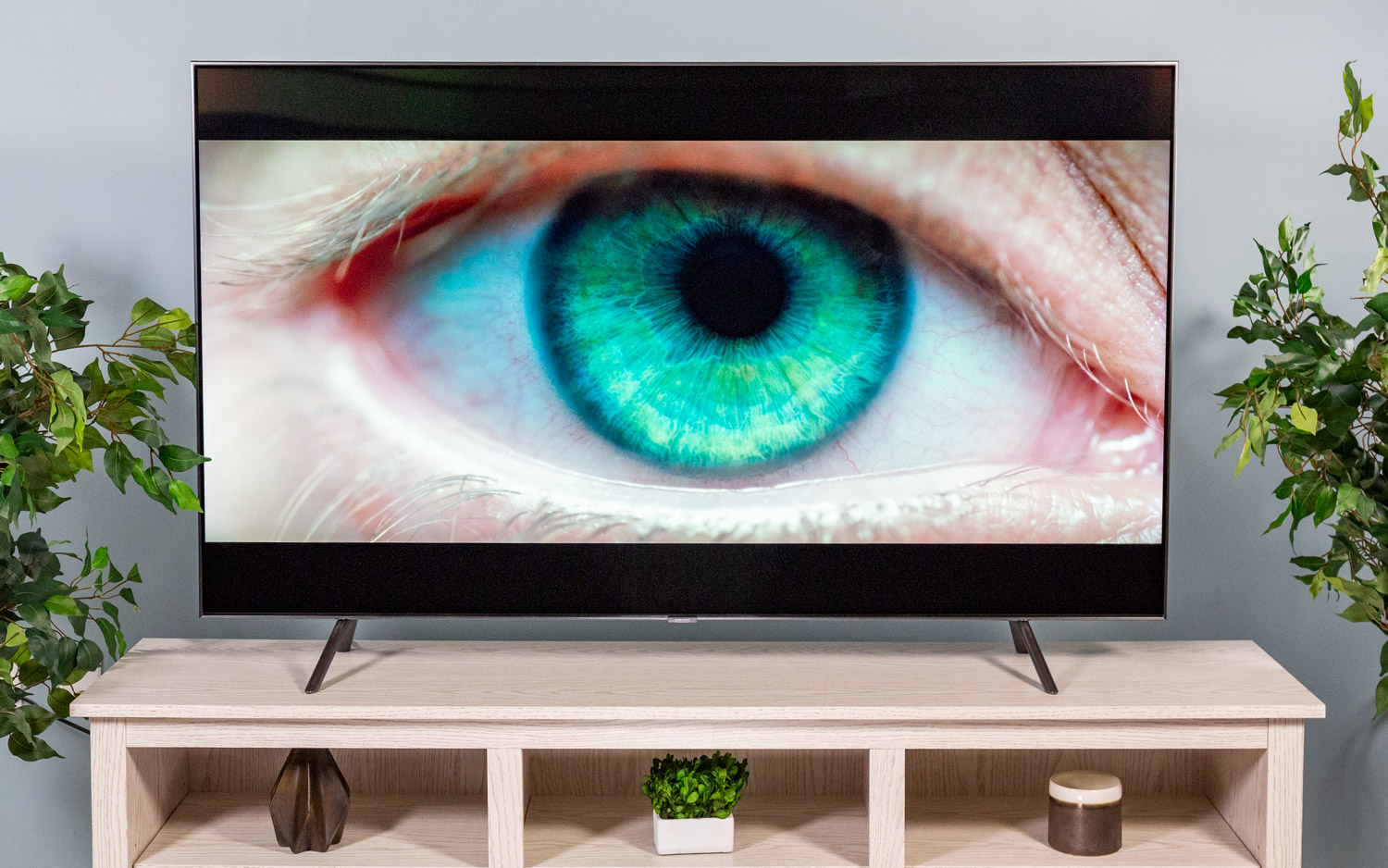
Here's a rundown of rumors for all of the major players, including LG, Samsung, Sony and more.
LG — Rollable TV, New 8K OLED and New Processors
Why you can trust Tom's Guide
One of the biggest CES 2019 announcements is expected be LG’s first rollable TV, a commercially available version of the LG Rollable TV prototype that LG Display demoed last year. The rollable design puts an OLED display onto flexible glass, pairing it with segmented components that let the entire screen roll up and tuck away out of sight.
By hiding the TV when not in use, you won't have to worry about how that big OLED TV looks when it's hanging on the wall with nothing on the screen. The rollable TV prototype had different modes as well. The first mode unrolls just one-third of the way open, allowing you to see info like weather and news. The second mode offers a 21:9 screen, which matches the aspect ratio of ultrawide movies. On the third mode, the screen unrolls completely for 16:9 aspect ratio, used in most movies and shows.
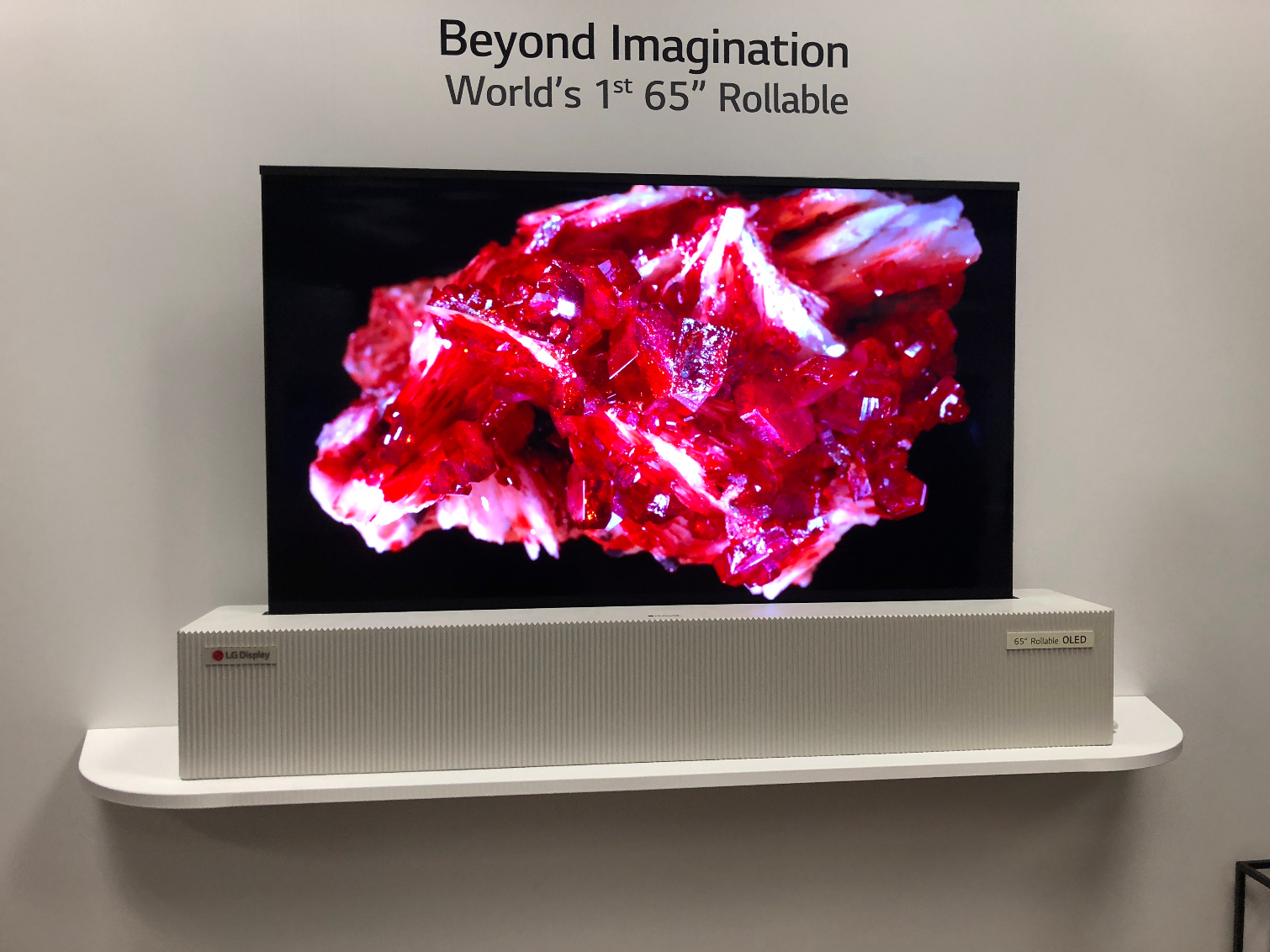
Also exciting is the likelihood of an 8K OLED TV. While Samsung made waves in 2018 with the first commercially available 8K TV, it used Samsung's QLED technology, which is still based on a backlit LCD panel. If LG comes out with an 8K version of its OLED set, it will pair the higher resolution with the undeniable benefits of OLED – deeper blacks and zero haloing, thanks to per-pixel illumination. While no official announcement has been made, LG's was showing off an 8K set at IFA (as seen by our sister site What Hi-Fi), and the company's own LG Magazine suggests that an 8K model may be released in June of 2019.
MORE: What Is OLED?
LG has already announced that its 2019 OLED TVs will be powered with the second generation of its Alpha 9 processors (called the a9 Gen 2). The processor will be used for both video enhancement and smart functions, like voice interaction. LG is promoting the chip's ability to produce clearer, sharper images, with improvements to every aspect of picture quality – color quality, contrast, sharpness, tone mapping and noise reduction, along with support for 120Hz high frame rate (HFR) content.
On top of that, we can expect LG to include the new processing hardware in its W9, E9 and C9 OLED TVs, which will be continuations of the current model lines. It's also likely that LG's ThinQ AI will get a boost, as well. LG uses the AI enhancement for everything from content recommendations to it's interactive voice assistant, and any enhancements to processing power will also provide a performance boost for these capabilities.
Samsung — MicroLED, More 8K Options and New Looks for QLED
Last year's CES saw Samsung grabbing attention with new resolutions, new designs and even a new display technology, and we can expect each of those trends to carry forward in 2019.
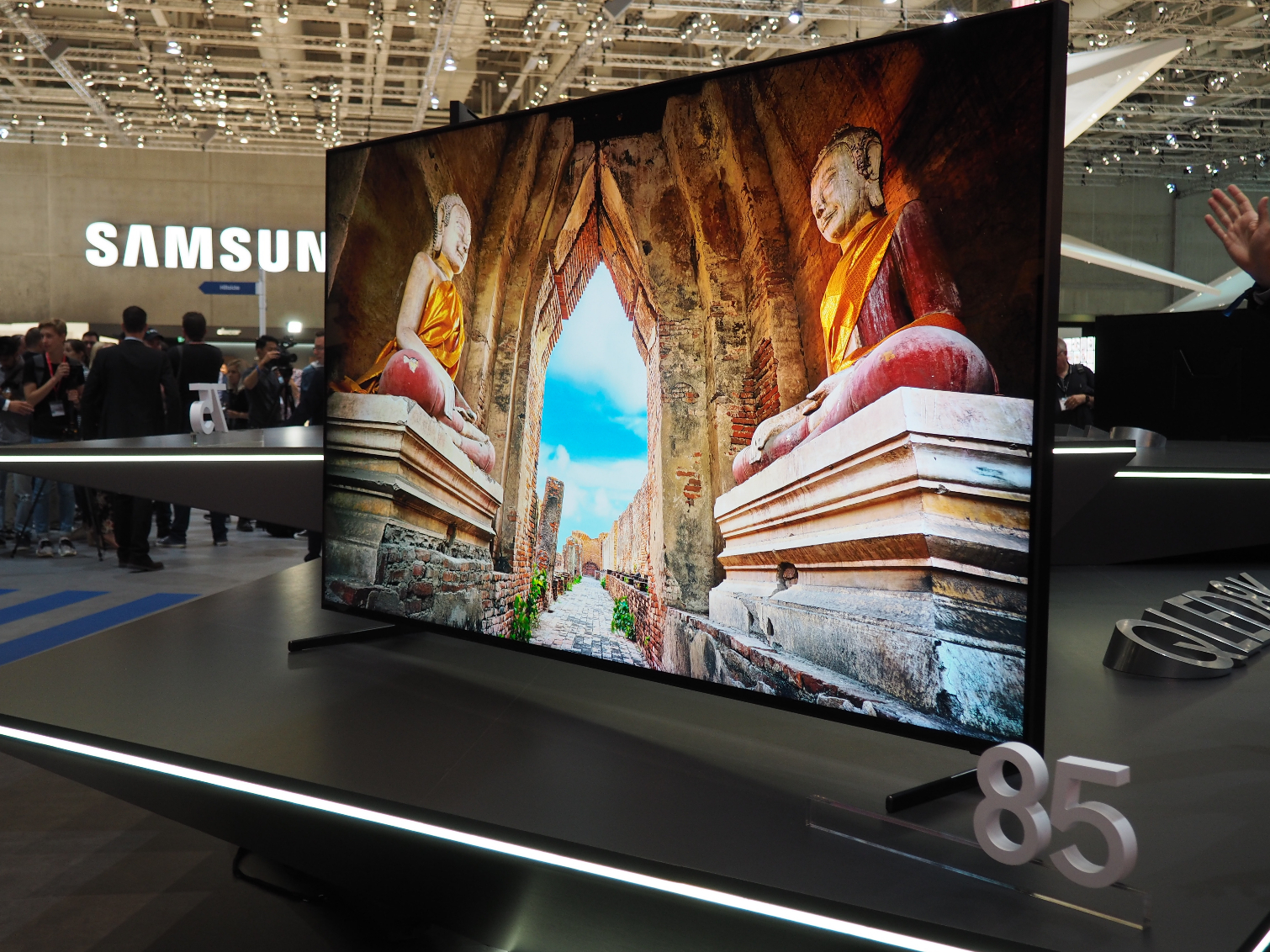
One of the biggest announcements at last year's CES was the giant 12-foot home-theater display that Samsung calls The Wall. The floor-to-ceiling display uses Samsung's new microLED display tiles, with dozens of small modular segments joining together to make the enormous screen. Though it was mostly a showpiece last January, The Wall has been available since mid-2018, and early reports suggest that Samsung will have a scaled-down version of its microLED display at CES this year.
Samsung is leading the market in 8K TVs, thanks to the launch of the 85-inch Q900R QLED 8K TV, the first commercially available 8K set, which sells for $14,999(US)/£14,999(UK). But while the U.S. has only been able to get 8K in the 85-inch size, the U.K. market also saw the 65-inch Q900R QLED, which puts the 33-million-pixel display into a more mainstream size. Chances are very good that we'll be seeing a similar 65-inch model launched in the U.S. for 2019, as well as a potential 75-inch model that fits between the two in both size and price.
Samsung's design-first lifestyle TV, "The Frame" has also been a big hit for the company, putting a slim 4K TV into a tasteful design that mimics a framed photo or painting hung on the wall. Samsung has recently announced partnerships with several galleries – New Zealand's Te Papa gallery, Italy's Uffizi galleries and The Van Gogh Museum in the Netherlands – to bring 62 classic artworks to the art store that accompanies The Frame. Launched in 2017 and refreshed in 2018, this announcement suggests another refresh is coming in 2019.
MORE: Best 4K TV - Reviews and Comparisons, From Budget to HDR
Finally, we can expect Samsung's QLED line to keep going strong in 2019. The premium TV line uses quantum-dot technology to offer the best LCD panels around, but early reports suggest new refinements to the technology, such as advanced filtering for better black levels, enhanced backlight and (hopefully) a smarter version of the Bixby voice assistant. Samsung has continued to incorporate Bixby into its smart phones and smart TVs, but we hope to see the voice assistant get improvements in voice recognition.
Sony — 8K Models, Master Series, Updated Android TV
Sony has managed to keep most of its CES plans under wraps this year, but we can still guess as to what might be coming from the TV giant.
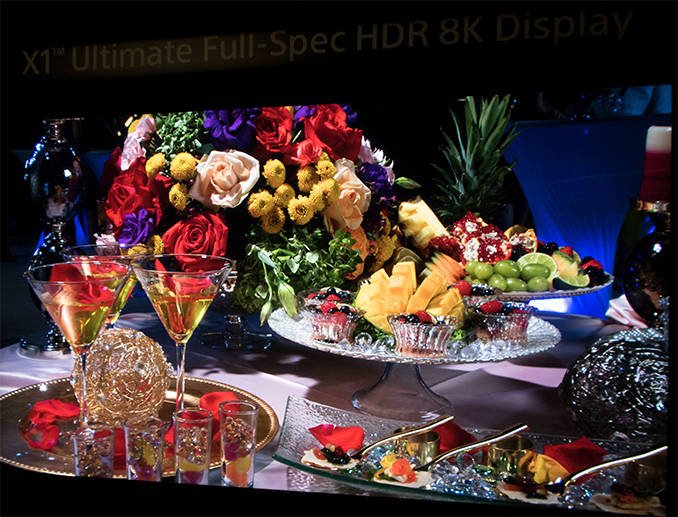
Last year, Sony showed off an 8K TV that paired the ultrahigh resolution with Sony's X1 Ultimate processor, a preproduction processor that more than doubled the processing power of the current X1 Extreme processors used in 2018 models of Sony TV. It also boasted an insanely bright 10,000 nit backlight, giving the 85-inch prototype exceptional dynamic range and contrast.
While no plans were announced to bring this particular model to market, it's likely that Sony will have one or more 8K models launching in 2019, and it's likely that several features shown in this demonstration will trickle down to the commercial models.
Sony also introduced a new line of flagship TVs in mid-2018, called the Bravia Master Series. These OLED and LCD TVs featured updated processor and features, like an improved version of the Acoustic Surface Audio+ sound system that uses the display's glass panel to produce sound, and wider viewing angles. It's likely that we'll see the Master Series expanded for 2019 with new processing hardware and additional screen sizes.
But one of the biggest features on the Master Series is Netflix Calibrated Mode (NCM), a fine-tuned setting for decoding 4K video streamed from the popular service and optimizing the display settings for the unique properties of the OLED or LCD panels used in each set. The feature is currently exclusive to Sony's Master Series, but I'd be surprised if we don't see it expanded to the rest of the Bravia lineup in 2019.
MORE: Who Makes the Smartest Smart TV? Here Are the Results
Finally, expect Sony's new TVs to launch with the newer Android TV 8.0, code named Oreo. Oreo updates have started hitting Sony's 2016 and 2017 models in early November, and some late 2018 models have been coming with the new OS preinstalled. The new version of Android TV includes improved search using Google Assistant, an improved on-screen keyboard and a more usable home screen menu. It also fixes a number of smaller technical issues, such as the picture quality issues seen when viewing Dolby Vision content on Netflix.
Everybody Else — Vizio, TCL, Hisense and New Roku OS 9
While that covers the biggest players in the TV space, it hardly covers everything. Manufacturers like Vizio, Hisense and others will continue to offer midrange and budget-friendly TVs, and are expected to announce new models and features at CES. One of the biggest drivers of change is Roku TV, which provides the smart-TV platform for most of these less expensive brands.
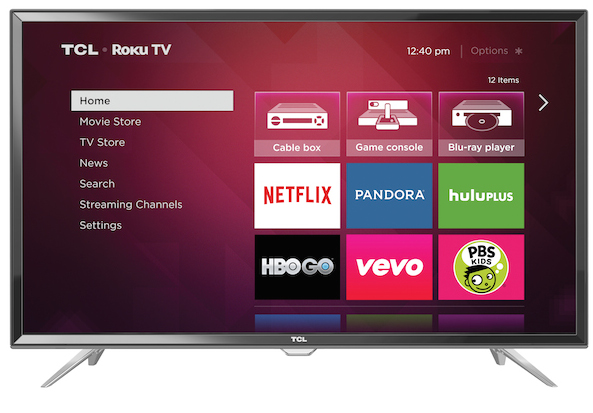
Roku OS 9 is coming to sets from Hisense, TCL, RCA and others, and it brings a slew of new features. The biggest changes include Google Assistant support, letting you use Google Assistant or a Google Home device to change channels, adjust volume and settings, open and pause apps, and search for content.
Content search, in general, is getting a boost, with the new "Free" genre voice search, which lets you not only search by genre (i.e., sitcoms, dramas or comedies) but specifically search for free content in those genres using phrases like "let’s see free sitcoms," or "show me free comedies."
New HDMI 2.1 Standard
Some changes that are coming are industrywide, and likely to show up across several manufacturers and brands. The biggest of these is HDMI 2.1, a new version of HDMI that offers up to 48Gbps of bandwidth.
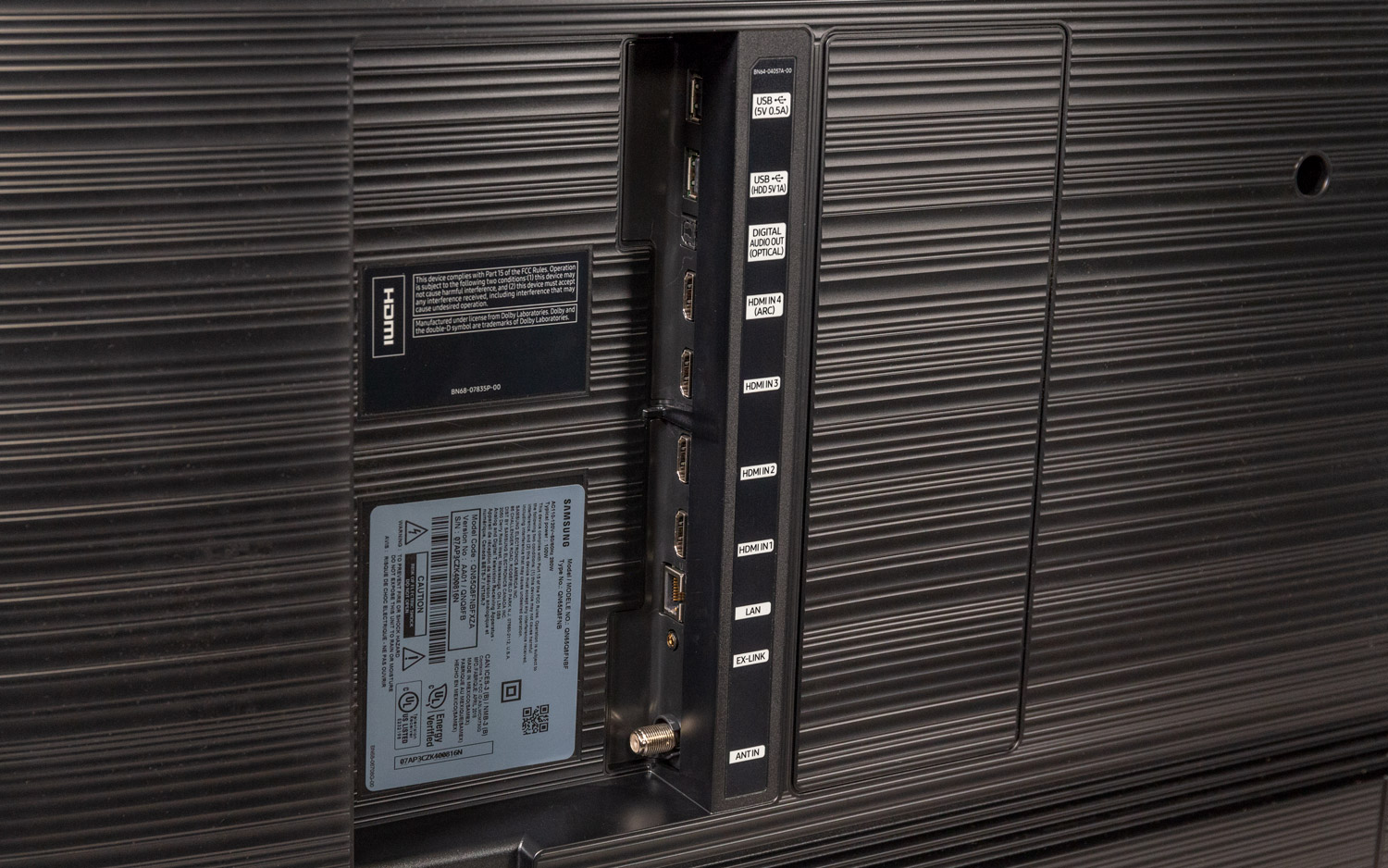
The biggest beneficiary of this huge data throughput will be 8K content. Current 8K displays use convoluted connectivity schemes like combining four separate HDMI inputs, or delivering video over Cat6 cable. The new HDMI 2.1 standard allows 4K resolution at 120Hz or 8K resolution at 60Hz and even up to 10k resolution, all with a single cable. Expect 8K sets announced for 2019 to all feature 2.1 connectivity.
You'll also see improvements for 4K TVs, with better delivery of high dynamic range content, variable refresh rate support and the higher bandwidth needed for some audio formats over eARC.
The HDMI 2.1 spec was only completed this year, but manufacturers have been preparing for its arrival since 2017, and the first full-bandwidth cables have just hit the market, so we can expect to see some models equipped with 2.1 ports later this year. But don't worry about having to swap out all of your cables just yet. The current HDMI 2.0b standard will still be in use for current 4K sets and well into the next few years.
Alexa and Google Assistant Everywhere
Finally, expect more TVs to offer voice interactivity, and consider compatibility with Google Home and Amazon Alexa to be a standard feature for smart TVs. These handy gadgets not only offer voice control, they also make it easier to integrate your smart TV into your connected home. Early adopters saw some smart-speaker integration in late 2017, and most manufacturers added the capability to premium models in 2018, but in 2019, it's coming to everything.
Credit: Tom's Guide
Sign up to get the BEST of Tom's Guide direct to your inbox.
Get instant access to breaking news, the hottest reviews, great deals and helpful tips.
Brian Westover is currently Lead Analyst, PCs and Hardware at PCMag. Until recently, however, he was Senior Editor at Tom's Guide, where he led the site's TV coverage for several years, reviewing scores of sets and writing about everything from 8K to HDR to HDMI 2.1. He also put his computing knowledge to good use by reviewing many PCs and Mac devices, and also led our router and home networking coverage. Prior to joining Tom's Guide, he wrote for TopTenReviews and PCMag.

